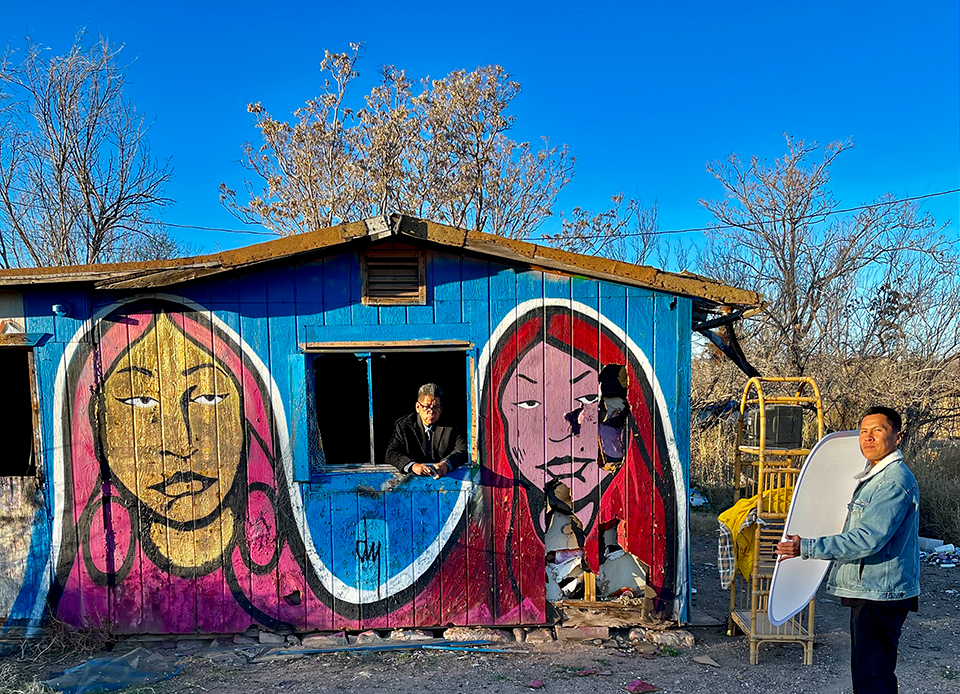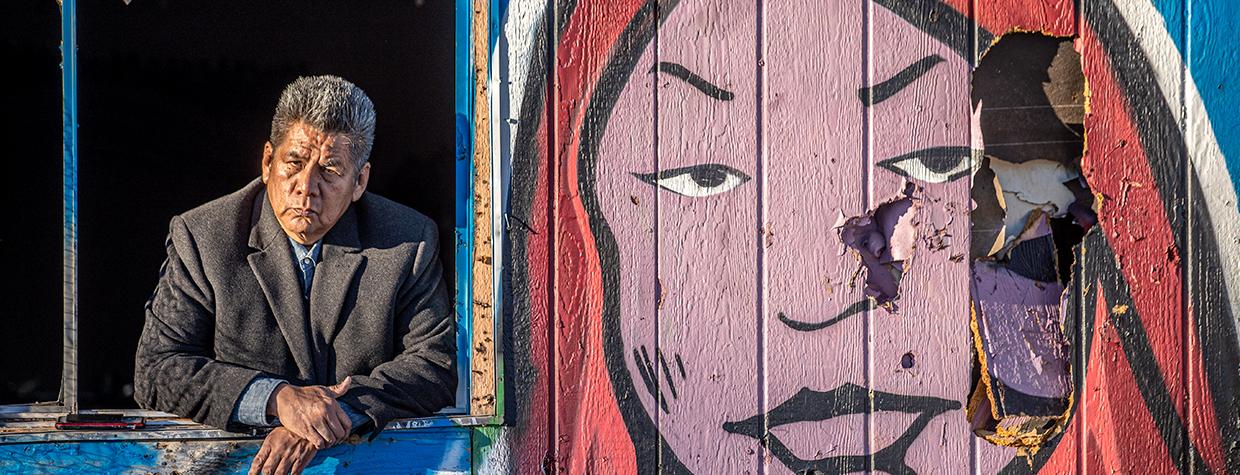
JK: When you do photo shoots for us, you like to use your iPhone as a scouting tool. When did that come about?
PM: Not that long ago. I really started when I got the iPhone 11, which was the first version with a wide-angle lens. With that, I could do almost any composition that I could do on my DSLR camera.
JK: What are the advantages of using a smartphone this way?
PM: It’s great for sizing up a location. Back in the day, we did scouting shots with Polaroids, but with smartphones, you’re not wasting film, paper or chemicals. You can share the shot with the client or art director right away, and it’s a great conversation starter. It’s a little like having a sketch pad. It gives the client a rough idea of what you think would work, and it starts that collaboration of finding the shots they want. They’ve hired me to come up with the concept, and my iPhone is a tool that speeds up that operation and helps me know I’m on the right track. Clients and I often have a hard time getting on the same page visually, and this way, I don’t have to try and verbally explain what a photo is going to look like.
JK: You make a lot of personal shots, too, and you’re very active on Instagram. Did that start about the same time?
PM: Absolutely. I think it was Annie Leibovitz who was asked what her favorite camera was, and she answered, “Whichever one I have on me.” I remember being in Paris in the early 1980s and carrying around a 45-pound Hasselblad system. You have to be 25 and foolish to do that. Now, I’m at a point where I don’t take my DSLR camera on vacations. The quality of my phone camera is good enough, it’s always in my pocket, and I don’t have to worry about misplacing my $7,000 camera.
JK: Plus, you don’t stand out in a crowd — people don’t change their behavior the way they would if you pulled out a big camera.
PM: That’s right. You’re just another yokel. Additionally, these cameras have gotten better and better. They shoot in any light, and they don’t take any time to set up. The big, expensive cameras make beautiful pictures, but you’re missing shots during that setup time. For a spontaneous, photojournalistic picture, a smartphone is the best choice. I’m using it to shoot things I never would have shot before, because I can operate it almost as fast as my brain can think. With a DSLR camera, you spend half your time shooting and half dealing with the camera. With my phone, it’s more like 90 percent shooting and 10 percent dealing with the camera.
JK: That said, you’re a professional. Do you still think about light and composition when you’re using your phone?
PM: Absolutely. I was at a friend’s wedding at Lake Tahoe recently, and a woman and her girlfriends wanted a shot in front of the band. There were four big lights right above them, and the lighting would have been terrible. I had them move forward 10 feet and made a much better photo. But they would have been happy with the first shot, and I look at Instagram all the time and see terrible lighting. It works because of the format — you know it’s a cellphone shot — and because there’s a different vibe to this kind of photography. I did an assignment a couple of years ago, and I asked the art director what he was looking for. He said, “What I’m really looking for is a cellphone shot with more megapixels.” The phone vibe is looser and less polished, and it feels more like what’s happening now. It’s been an exciting thing for me to explore, and it keeps me thinking photographically and exercising my brain. And it’s so important to stay mentally limber by shooting as often as you can.
Do you have a question about photography? Email it to [email protected], and our photo editor, Jeff Kida, will try to answer it in a future issue.

